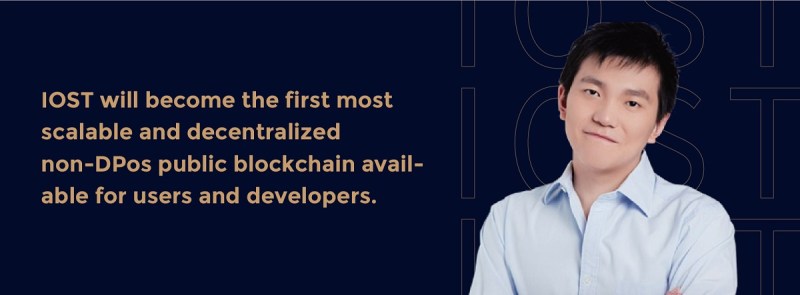IOST announced that its mainnet network for its IOST cryptocurrency is ready now and decentralized applications will be able to go live for consumer use on March 10.
Beijing-based IOST has been building its infrastructure for its token for the past year, and now, it’s set to go with a network of more than 150 partners, said Jimmy Zhong, CEO of IOST, in an interview with VentureBeat.
The IOST mainnet will support a number of new decentralized apps (DApps) in the coming weeks built by hundreds of enthusiasts from a global network of more than 150 partners, including Huobi, DDEX, iBank Digital Asset, and CoinGecko. It uses blockchain, the secure and transparent decentralized ledger that enables digital currencies known as cryptocurrencies. The company’s goal is to establish a trusted form of commerce for everything from games to banking.
The milestone comes six months ahead of schedule and marks the introduction of an accessible, community-friendly platform, Zhong said. It will debut with games, wallets, decentralized exchanges, stablecoins, and other applications launching in tandem, he said. Those apps are compatible with the popular Ethereum cryptocurrency simple contracts.
June 5th: The AI Audit in NYC
Join us next week in NYC to engage with top executive leaders, delving into strategies for auditing AI models to ensure fairness, optimal performance, and ethical compliance across diverse organizations. Secure your attendance for this exclusive invite-only event.
“We can create a new platform that is scalable and solves problems like high latency,” Zhong said. “Other platforms sacrifice a lot of decentralization to achieve speed. With our consensus protocol, we can get to a few thousand transactions per second.”

Above: Jimmy Zhong is CEO of IOST.
The IOST network uses “proof-of-believability” to achieve consensus, or enough verification for everyone to trust the system. While traditional proof-of-stake consensus algorithms leave control and compensation in the hands of a smaller number of nodes, IOST constantly rotates nodes and block production.
Bitcoin and Ethereum use the benefit of decentralized verification of transactions in order to process transactions, with tens of thousands of nodes used to verify a change to the digital ledger. That makes the transactions trustworthy, but it also makes them slow. Rival networks EOS and Tron use smaller numbers of trusted nodes to achieve consensus, which results in less trust but high transaction speed.
Zhong said that the proof-of-believability consensus mechanism reduces the centralization of the transactions, but it still uses hundreds of nodes to achieve consensus on a transaction. That reduces the risk of fraud and still enables thousands of transactions per second, Zhong said.

Above: IOST partners.
IOST has a relatively low market value at around $97 million for its token, but it has raised $35 million from a number of venture funds, including Nirvana Capital, Matrix Partners, Huobi, Sequoia, Theseus, ZhenFund, and Bluehill.
“Despite listing in a challenging market after, IOST has emerged as one of the leading projects in 2018,” Zhong said. “The support and backing from top institutional investors, such as Sequoia Capital and Matrix Partners, and now launching our application-ready mainnet six months ahead of schedule confirms this.”
In the lead up to the launch, IOST also announced its global partner program, which aims to create a more accessible way for individuals, teams, and organizations of both technical and non-technical backgrounds to contribute and decide on the future of the IOST network while being rewarded for their contribution to the ecosystem. This marked the first time that retail users were able to participate in the growth and security of a blockchain network in its early stages.
“Building the iStablecoin service on IOST has accelerated our ability to reach a wider base of users and introduce them to a lively, fast-growing ecosystem,” said Davis Gay, cofounder of Rate3, in a statement. “Significantly, IOST is the first to launch a mainnet that immediately represents what the broader blockchain ecosystem looks like, complete with native and non-native applications, and existing users.”
IOST’s mainnet launch follows a string of recent ecosystem developments, including the completion of the IOST public testnet, which achieved processing speeds of more than 8,000 transactions per second (TPS) and the establishment of the $50 million IOST ecosystem fund. The company has more than 100 people in offices in Beijing and New York.

